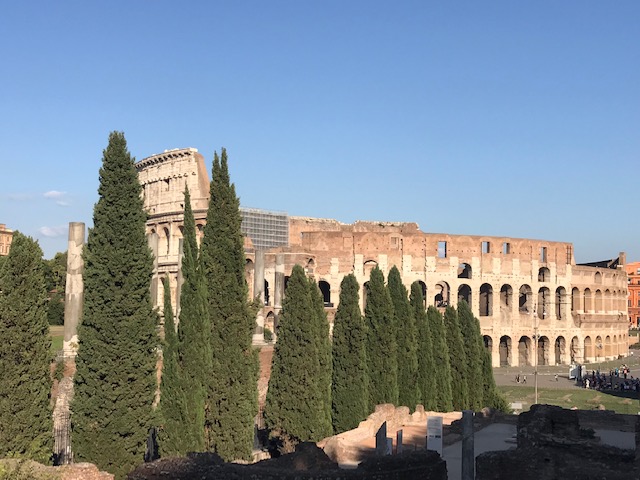
My daughter’s educational journey (outside of the home) began at a PreSchool/Kindergarten inspired by Waldorf. She spent her elementary school years at a small Montessori school.

I began dreaming about homeschool when Elle was around nine years old. I’d read Home Grown by Ben Hewitt and started envisioning a life of learning alongside Elle . . . a life of connection: to our world, to people and place. I had a strong desire to unschool myself. I wanted to feel the interconnectedness of everything, which I hadn’t experienced in my own education. I wanted to create space for each of us to follow our passions. The slow, good life I was forming in my home—I wanted it to overlap into the way we educate. Though I had yet to discover it, it was a Wild + Free kind of life I dreamed of.
Elle graduated elementary at 6th grade. We spent summer months reading Roman history. When fall came, instead of heading to school, we set off for a five week trip in Europe. My dream was coming true! I felt boundlessly free and full of responsibility. My heart always reminded me that everything was happening as it was supposed to. And my mind would speak my fears, “Am I doing enough? Will she be prepared?”
You can have all of these convictions about education, and it takes time to fall into the home-educating lifestyle, it takes time to rid yourself of your conditioning around education and what must get done.

Now, for the practical:
On the trip, all the learning was through the experiences. We didn’t produce a whole lot of “work.” But all year, we read books and circled back to our experiences. At home, we fell into a rhythm based on Elle’s Montessori background, which meant she worked for a period of time in the mornings in a self directed way. We’d write down “works” in her agenda and she’d do them in the order of her choice. Most often, this equaled an hour of uninterrupted time for me to do my own activities. Then there would be time for us to work together. The afternoons were free. Every day, she’d write what she’d worked on in her agenda. She attended a hybrid homeschool program on Mondays and Tuesdays, where she had a math and science teacher, along with enrichments. My main focus has been on history and language arts.
I didn’t purchase a curriculum (part of my own passion is creating curriculum!). I followed the Waldorf topics of study for the sixth and seventh grade. Discovering great literature has been a favorite activity of mine. Connecting history and language arts has been a joyful and holistic way to understand a time period while also analyzing texts, practicing writing and understanding vocabulary, spelling and grammar.

Here are some of our favorite historical novels:
- The Bronze Bow by Elizabeth George Spear (set during Roman times)
- The Inquisitor’s Tale by Adam Gidwitz (a medieval adventure story)
- A Proud Taste for Scarlet and Miniver by e.l. Konigsburg (the story of Eleanor of Acquitaine)
- The Second Mrs. Giocanda by e.l. Konigsburg (the story of Leonardo da Vinci and the Mona Lisa)
If you’d like to see more, I’ve put together all of our top history and language arts resources in a guide with over 30 links. In it, you’ll also see examples from the Main Lesson book, along with ideas for various learning opportunities using great literature. Download this guide, 6th & 7th Grade History and Language Arts Resources for FREE when you join the mailing list.